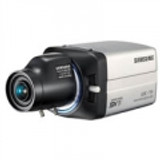CCTV Security Cameras
HD CCTV over Coax — CVI / TVI / AHD (2MP • 4MP • 5MP • 8MP/4K)
Upgrade your CCTV to modern HD CCTV without re-wiring. A2Z’s multi-format cameras support CVI, TVI, and AHD (many also include CVBS) and deliver 2MP/1080p, 4MP, 5MP, and even 8MP (4K) Ultra HD. Keep existing RG59/RG6 Siamese runs, pair with a Hybrid DVR/XVR, and phase in IP later as needed, on the same platform. HD CCTV Security Cameras can even work via CAT5e/CAT6 cables along with adapters, and are a great option for long cable runs.
Need a turnkey kit? See CCTV Security Camera Systems. Comparing to PoE and analytics? Visit IP Security Cameras. Planning storage/compatibility? The Support Hub has FAQs, calculators, and guides.
-
 CCTV Dome Security Cameras
CCTV Dome Security Cameras
-
 CCTV Turret | Eyeball Security Cameras
CCTV Turret | Eyeball Security Cameras
-
 CCTV Bullet Security Cameras
CCTV Bullet Security Cameras
-
 CCTV PTZ Security Cameras
CCTV PTZ Security Cameras
-
 CCTV Box Security Cameras
CCTV Box Security Cameras
-
 CCTV Fisheye | Multi-Sensor | Panoramic
CCTV Fisheye | Multi-Sensor | Panoramic
-
 LPR License Plate Capture Cameras
LPR License Plate Capture Cameras
-
 CCTV Special Security Cameras
CCTV Special Security Cameras
-
 Thermal Infrared Security Cameras
Thermal Infrared Security Cameras
-
 CCTV Explosion-Proof Cameras
CCTV Explosion-Proof Cameras
-
 EOL Discontinued CCTV
EOL Discontinued CCTV
There are no products listed under this category.
